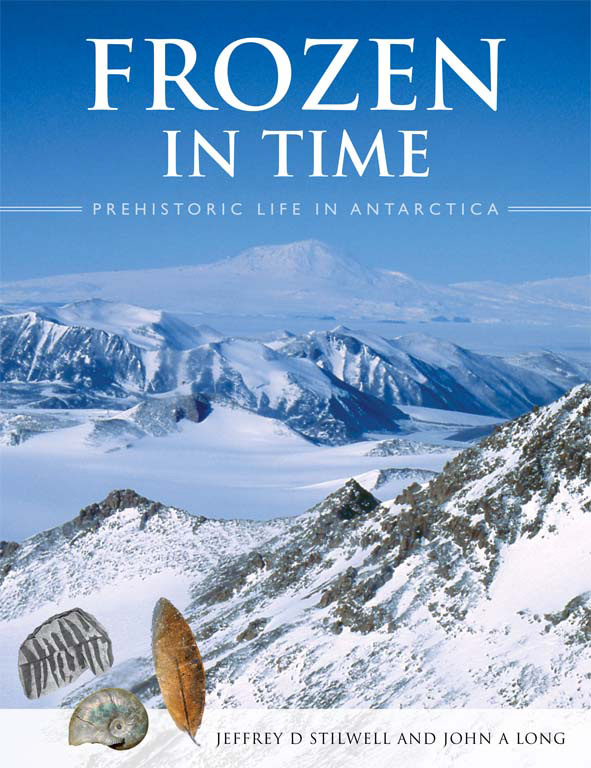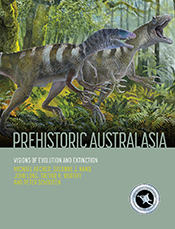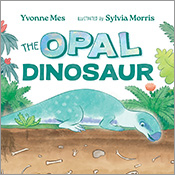Frozen in Time
Prehistoric Life in Antarctica
By: Jeffrey D Stilwell, John A LongAn overview of the fossil record of Antarctica, framed within its changing environmental settings.
No other continent on Earth has undergone such radical environmental changes as Antarctica. In its transition from rich biodiversity to the barren, cold land of blizzards we see today, Antarctica provides a dramatic case study of how subtle changes in continental positioning can affect living communities, and how rapidly catastrophic changes can come about. Antarctica has gone from paradise to polar ice in just a few million years, a geological blink of an eye when we consider the real age of Earth. + Full description
Frozen in Time presents a comprehensive overview of the fossil record of Antarctica framed within its changing environmental settings, providing a window into a past time and environment on the continent. It reconstructs Antarctica’s evolving animal and plant communities as accurately as the fossil record permits.
The story of how fossils were first discovered in Antarctica is a triumph of human endeavour. It continues today with modern expeditions going out to remote sites every year to fill in more of the missing parts of the continent’s great jigsaw of life.
- Short descriptionNews
This title is no longer available in print format, but can still be purchased as an eBook via the eRetailer links above.
Reviews
"The text is clearly written and is backed by a nine page scientific glossary. It is illustrated by a wealth of beautiful photographs, supplemented by artists' reconstructions, as well as stunning images of Antarctic landscapes.
I strongly recommend Frozen in Time and, if you can't buy it yourself, I suggest that you recommend it to your local public library or school library so everyone can enjoy it and share in the thrill of discovery on a frozen continent."
Alex Ritchie, The Victorian Naturalist, pp. 214-215, Vol 129 (6), December 2012
"In this beautifully presented book, the frozen wasteland of Antarctica that we see today is revealed as completely different to its earlier forms, which are painstakingly being revealed by studies of the rich and diverse fossil record. ...this is an extremely interesting book with superb photos. It makes very engrossing reading."
Roz Hart, WA Naturalist News, April 2012
"If the authors intended to produce a good review of Antarctic fauna and flora in a coffee-table book, they have succeeded... This book should be in every school and university library: it should also be bought by many who are interested in, or have children interested in, natural history (biology/ geology), the Antarctic, dinosaurs, change with time, etc."
Patrick G Quilty AM, The Australian Geologist, pp. 45-46, March 2012
"It is well produced and superbly illustrated with many of the authors’ own photographs – a comprehensive account of fossils of the Antarctic, their discovery, diversity and significance."
Robert Jones, Explore 34(2), Winter 2012
"With complementary specialties – Stilwell’s in ancient Earth environments and Long’s in the early evolution of Australian and Antarctic fish – the authors combine their expertise to link the geological history of Antarctica to the organisms that inhabited the land through an exhaustive review of the fossil record… this book provides an everything-you-ever-wanted-to know guide to the prehistory of Antarctica. Most compelling are the stunning photographs of the Antarctic landscape and the remarkable archaeological finds that have allowed researchers to investigate the evolution of life there."
Jennifer DeBerardinis, Cosmos Issue 43, 2012
Details
ePDF | October 2011ISBN: 9780643104013
Publisher: CSIRO Publishing
Available from eRetailers
ePUB | October 2011
ISBN: 9780643104020
Publisher: CSIRO Publishing
Available from eRetailers
Features
- Copiously illustrated with magnificent colour images
- Provides an overview of the discovery and exploration of Antarctica
- Gives a clear guide to the palaeontology of Antarctica
- Includes contemporary issues of heritage and preservation
- Outlines the possible major impacts of climate change
Contents
ForewordPreface
Acknowledgements
1 The cold, barren land we call Antarctica
2 A continent discovered
3 The fossil pioneers
4 Antarctica’s oldest fossils
5 The age of fish and ferns
6 A time of southern coal swamps
7 Giant amphibians and hairy reptiles
8 Volcanic lakes and early dinosaurs
9 When dinosaurs ruled
10 When giant reptiles swam in southern seas
11 Killer birds, giant penguins and early mammals
12 The big chill: from paradise to polar ice
13 Life today in the frozen south
Endnotes
Glossary
References
Index
Authors
Jeffrey Stilwell is currently a Senior Lecturer and Leader of the Applied Palaeontology and Basin Studies Group in the School of Geosciences at Monash University, and Honorary Research Associate at the Australian Museum, specialising in ancient greenhouse Earth environments and equator-to-south-polar ecosystems. He is the author of five monographs and more than 60 peer-reviewed research papers, including many on the fossil record of Antarctica. He has participated on five major expeditions to the Antarctic Peninsula and Transantarctic Mountains/McMurdo Sound.John Long is an Australian palaeontologist who is currently the Vice President of Research and Collections at the Natural History Museum of Los Angeles County. He has authored some 26 books, including The Rise of Fishes and Feathered Dinosaurs. His research has focused on the early evolution of fishes, especially from Australia and Antarctica.








